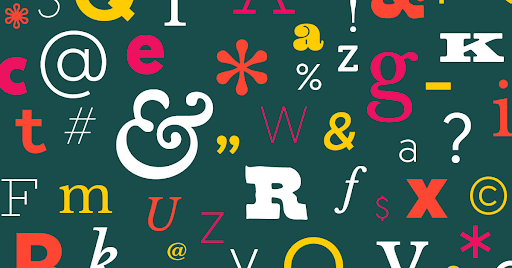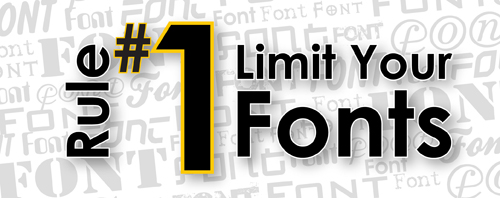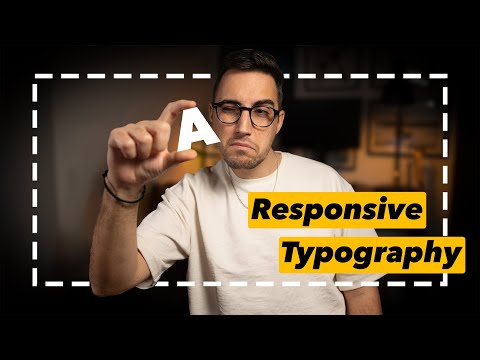Essential Typography Tips for Modern Web Design

Typography is the foundation of the web design that defines whether users will find the presented content easy to read. Safe typography also increases clarity, helps organize material, and plays a significant role in the aesthetics of websites. Typography has never been more critical than in today’s world, which is so devoted to web design aesthetics. It is helpful when you think of a layout for your blog, an e-shop, or even a corporate site you are creating. In this article, you will find six must-know typographical improvements that can help you enhance your contemporary web designs.
1. Choose Readable and Web-Safe Fonts
"The principal purpose of typography in web design is to convey your messages. Knowing the fonts that are easy to read and compatible with the web is the first critical step towards easing interaction with your website. These fonts include Arial, Verdana, and Georgia since they can be used when placing text on the screen. Google and Adobe Fonts also have many new and friendly Web typefaces for different devices and browsers." says Lauren Taylor, Marketing Manager at Emergency First Aid At Work Course
They need to be more fancy and complicated to be helpful for the main text, which is why simplicity should often be a guiding principle. Choosing a unique creative font style is also possible, but it should be acceptable for readability. It is now possible to use a friendly font with small-screen gadgets such as cell phones that are still very legible.
2. Limit the Number of Font Styles

The web design should be uniform; only a few font styles should make the page look messy. "A good rule of thumb is limiting your design to two or three fonts: one for titles and headings, one for general text, and one more for specific accents or web elements like buttons or quotes. Excessive choice of fonts is counterproductive because it takes attention away from the content and disorients visitors to the website. Two fonts can work well together." asserts Sarah Jeffries, Director at Paediatric First Aid. For instance, using a sans-serif font for titles and a serif font for the content will make it look neat and modern. Thus, users can use numerous free font-matching tools when choosing fonts for their web pages.
3. Establish a Clear Visual Hierarchy
"Visual hierarchy means properly presenting or organizing the text to lead users through the content. A well-arranged typology allows users to skim over your site quickly and find the required information. To differentiate between headings, subheadings, and the body, font style, size, and weight should be adopted. Readers are inclined to focus on significant and uncomplicated letters. Large letters are always great for headings, while body letters are compact." shares Martin Seeley, Senior Sleep Expert of Mattress Company. The point is to make the guests of your site better understand what part of the content is more important and what is less important to them as the result of the proper division of text elements.
4. Pay Attention to Line Height and Spacing
Another aspect of typography is how the text is formatted on the screen. Dr. Nick Oberheiden, Founder at Oberheiden P.C., inserts, "Choosing the correct distance between lines (line height or leading) and between letters (kerning) is imperative. Text set too close together may appear congested, less inviting to read, or even challenging to decipher. Text set farther apart will also seem silly to read. According to Helena, the initial line height that designers set should be approximately 1.5 times the font size of the body text. Still, the actual number differs depending on the specific font. An appropriate quantity of white space around the text helps enhance the design's general appearance and prevents users from getting confused by too much content surrounding them."
5. Use Responsive Typography for Mobile Users

It cannot be seen just in the font you select—how the text is placed strategically on the screen is also an aspect of typography. George Silagadze, Co-Founder & CEO of Handcrafted Photo Art - Photo2Painting, comments," There is a significant difference between the line height (leading) or the distance between the lines of text and between individual letters (kerning). Despite the excessive density of texts appearing congested and fading to the eye, texts spaced too widely appear disconnected. One good point is about 1.5 times the font size you use for the body text, but this could vary depending on the font used. Appropriate space surrounding the texts enhances the general outlook of your design and prevents information overcrowding."
6. Consider Color and Contrast for Accessibility
Nowadays, much care is taken while designing websites, and typography is vital. So, everyone should keep using your website. "Please select the font color that will be as far as possible differentiated from the background. Using low contrast reduces the ease with which users, especially those with visual difficulties, can interpret the content. The Web Content Accessibility Guidelines (WCAG) recommend a contrast ratio of at least 4.5:There is a proportion of 1 for standard text size and 3:1 for large text size. There are also tools like contrast checkers that can help you determine whether your typography matches these standards. Also, do not solely rely on color to depict importance; check that text in color is distinguishable from the background in a black-and-white scenario because some people can not distinguish different colors due to color blindness." adds Sumeer Kaur, Founder of Lehenga Choli
Conclusion
Apart from aesthetics, typography is now a crucial aspect of modern web design, ranging from readability levels and usability to accessibility. Here, it is possible to describe decisions that make it possible to develop a definitely better and almost definitely more convenient website: selection of fonts with relatively high readability, adherence to such principles as the visual hierarchy, and such parameters as the interval, the contrast of shades, and, finally, the responsiveness of the website. When progress is made in web design, understanding typography will contribute to achieving the intended message in a tailored way to impact the viewer positively. Whether one is developing a blog or corporate website, a layout following these typographical hierarchy guidelines will help create a professional web presence.
Copyright © . All Rights Reserved